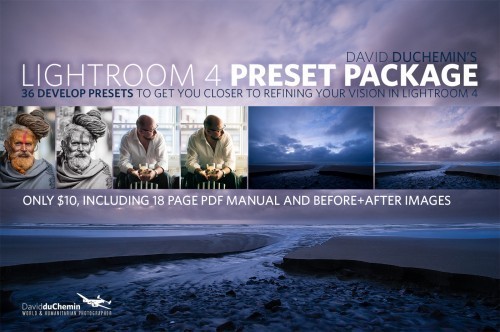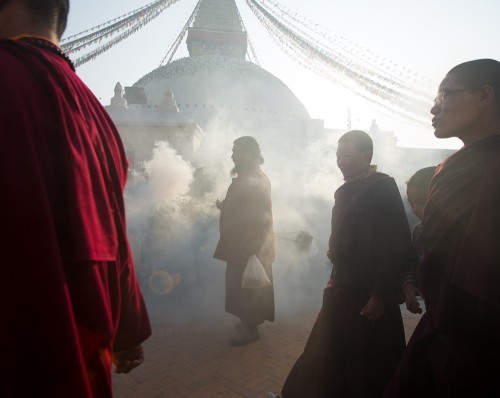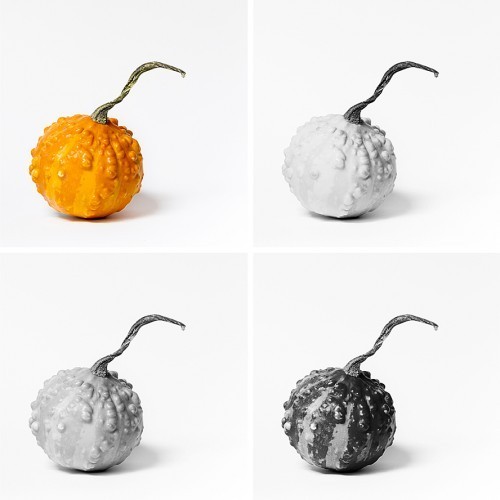David duChemin's Blog, page 43
November 10, 2012
Postcard from Kathmandu
 Quick postcard from the Kathmandu valley in Nepal. After 5 days in Kathmandu, mostly in the very Buddhist community of Boudhanath and the very Hindu area of Pashupatinath, we’re moving on to the Newari town of Bhaktapur. The last week’s been a blur as we’ve settled into a routine with this place, and each other. Before leaving for Bhaktapur we went back to Pashupati for one last visit with old friends, some of the many saddhus, Hindu holy men that have renounced it all, that spend much of the year there on the banks of the holy Bagmati River. If you’ve read Within The Frame, you’ve seen photographs of some of them, and to be back there is always a thrill. Some new faces, and the absence of a couple that saddened me.
Quick postcard from the Kathmandu valley in Nepal. After 5 days in Kathmandu, mostly in the very Buddhist community of Boudhanath and the very Hindu area of Pashupatinath, we’re moving on to the Newari town of Bhaktapur. The last week’s been a blur as we’ve settled into a routine with this place, and each other. Before leaving for Bhaktapur we went back to Pashupati for one last visit with old friends, some of the many saddhus, Hindu holy men that have renounced it all, that spend much of the year there on the banks of the holy Bagmati River. If you’ve read Within The Frame, you’ve seen photographs of some of them, and to be back there is always a thrill. Some new faces, and the absence of a couple that saddened me.
I’m always saddened, too, by tourists behaving without respect or kindness towards these fascinating men, avoiding eye contact, taking photographs and moving on without so much as a namaste or hello. Saddened mostly, I think, because these men deserve better than that, and the tourists with the cameras are missing the chance to meet them, sit with them, and learn their names. They go home with a snapshot and without the experience. So it goes, I suppose, but one seems a poor substitute for the other. And then on the flipside I see our students hanging out with these men, taking the time to ask their names or inquire about their lives, and it shows in their photographs, made stronger by the respect, curiosity, and patience they’re learning to make part of their process. 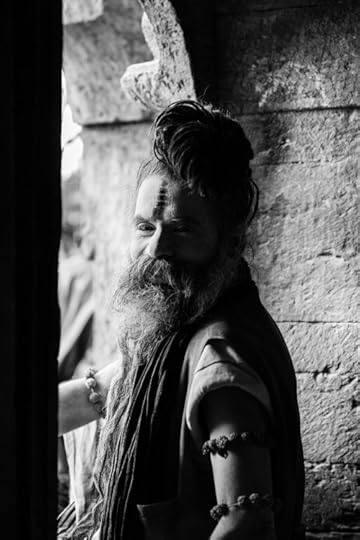 A few more days here, and they pass far too quickly, and we’ll be heading in our divergent directions home. I head to Tierra del Fuego then to Antarctica in just over a week. Last year I said I’d be out of touch entirely and then blogged more often from Antarctic waters than I sometimes do from home, so I hope you’ll join me on this adventure. It’s nice to be remote and unplugged, but even nicer to share these astonishing places.
A few more days here, and they pass far too quickly, and we’ll be heading in our divergent directions home. I head to Tierra del Fuego then to Antarctica in just over a week. Last year I said I’d be out of touch entirely and then blogged more often from Antarctic waters than I sometimes do from home, so I hope you’ll join me on this adventure. It’s nice to be remote and unplugged, but even nicer to share these astonishing places.
November 6, 2012
My LR4 Develop Presets Now Available
It’s taken me a little while to update my most frequently used Develop Presets for Lightroom 4. In so doing I’ve collected 36 of my best starting points for development work in LR4, which uses very different stuff under the hood. If you’re using LR4, and you should (honestly, I’m no fan boy, but my photographs have never looked so good), then you can take advantage of this. If you’re still using LR3, then consider upgrading.
Today I’m releasing my Lightroom 4 Develop Preset Package. 36 of my most used presets and an 18-page PDF guide, which includes a How-To on installing them, and complete Before & After photographs of each preset to give you a sense of what these presets do. Now, before we go further, let me clarify my own position about presets, in case you’re curious. I view presets as extremely helpful in my own workflow, because they make me more efficient. These presets are really the only ones I use with any frequency and I made them all myself. I’m not offering them because they’re a magic bullet. They aren’t. If your photographs suffer from weak composition or a missed moment, these presets won’t make the photograph any better. They’ll just make 36 different versions of a weak photograph. But if you’re looking for some new starting points, these presets will help. Here are a 9 of the 18 spreads (hint: click one, let it open large, then use the arrows to go from large image to large image):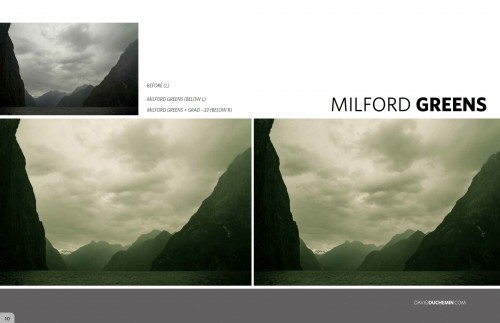
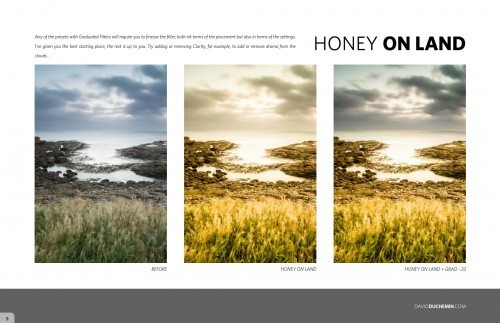
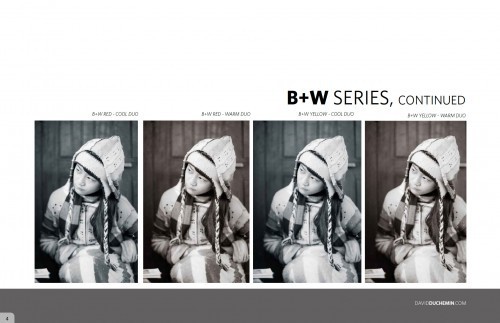
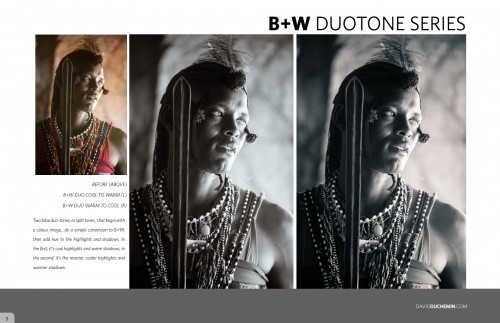
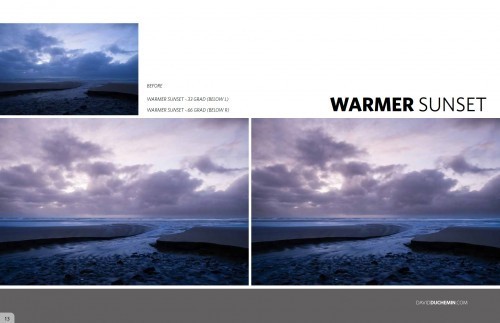
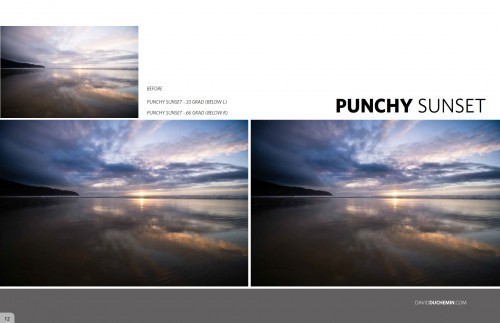
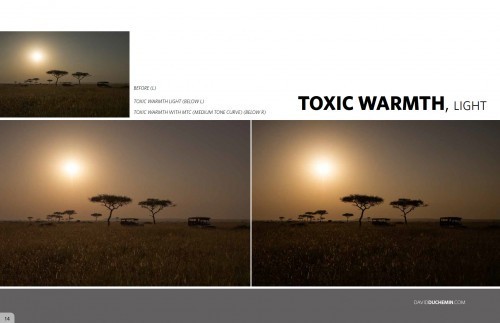
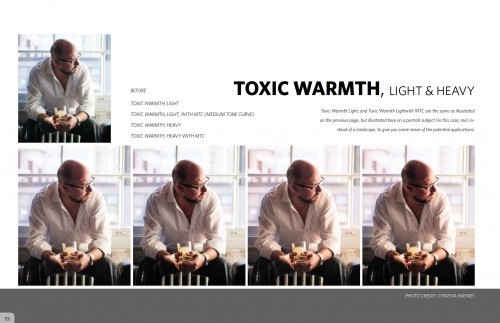
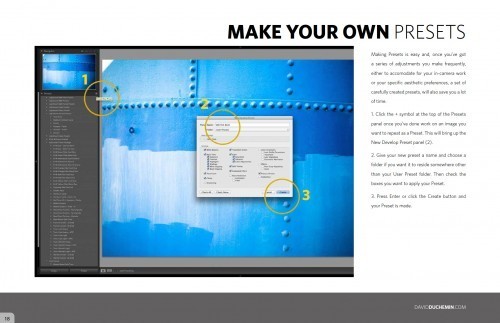
A second disclaimer, for those that don’t know me: These aren’t gimmicks or trendy presets I created just to earn your dollar. I hope you know me better than that, but some of you won’t. There are lots of presets out there – some of them free (and kind of crappy) and some of them excellent (and really expensive.) I’m offering these, at what I think is a very reasonable $10 for 36 of them and a manual – which means each preset will cost you $0.25 and the manual will cost you the remaining pennies. I’ve included simple instructions on installation and the guide has Before + After shots of all the presets. The rest is up to you. My hope is that you’ll download these, and not simply apply them but learn from them. Look at what they do, peer under the hood, play with them, and adapt them to your own workflow and particular aesthetic by making new presets. The more you pull these apart, the more value you’ll get out of them.
My LR4 Preset Package will only work with LR4. Because of the new process, they will work with LR3 but not reliably (I can’t even comment on anything before LR3. Please, for the love of Ansel Adams, tell me you aren’t still using the original Lightroom. We’ve all move on to better things. Join us!). It is available today for USD$10. No gimmicks, just my own collection of Develop presets from which I begin much of my own daily work. I hope they’ll serve you well.
By the way, we’ve got a busy month and a few great products coming out. We try really hard not to overwhelm, but this month is just going to be a little more full-throttle than usual. We’re trying to get it in before December comes when we just really don’t want to add to the noise that’s already out there. Just wanted to let you know we’re conscious of this, and hope you’ll be as excited about this month’s offerings as we are! I’ll post when I can but I’m in Kathmandu for the first half of the month and head to Antarctica shortly after that. Will do my best to send postcards!
Quick Update: After I posted this I caught some heat from people who felt it was blatant hypocrisy to offer these after posting THIS RANT. The comment section filled up to the point it broke the page. I reluctantly deleted the entire string of debate for the sake of this page. Your comments were read, taken to heart, and where I disagreed with them, that was stated too. I still believe, as I stated in the text above (and the rant before that), that no plug-in or preset will make a bad photograph good, and that any teacher who claims it does, for that sake of flogging a product, is doing a disservice to his students.
November 5, 2012
Rambling Postcard from Kathmandu
Rubbing the sleep from my eyes, I pull on my down vest and head downstairs. I’m amazed I slept until 6:30 but with the uptake of the day’s usual din, there seems no point in pushing my luck, and with the sun coming out, part of the day I love most here is just before me, and fleeting.
Reluctantly I throw my camera over my shoulder (I just want a cup of tea), change the time zone to Kathmandu, grab my other camera and do the same, then step outside and into the circle. I’m staying in Boudhanath, the predominantly Tibetan end of town, where life revolves, literally, around the large whitewashed stupa, flanked with prayer flags and over which Buddha’s eyes, painted with simple lines and bright colour, watch. Around the stupa walks a constant flow of people, prayer beads in hand, spinning prayer wheels and chanting. They take breaks to say hello to friends, put a bill in the hands of a blind beggar, or light a candle, then re-join the circle. I join them. I’ve done this now for 5 years, my 36 hour travel to get here feels like its own pilgrimage.
I’ve come to make photographs and, believing you can’t photograph something you’ve not experienced, I join the circle and walk clockwise around the giant stupa, along with the faithful, the tourists, the crimson-clad monks, and the mangiest dogs you’ve ever seen. Not a Buddhist myself, I have nonetheless found my own deep meaning here, amidst the smoke and incense, pigeons and pilgrims, my walk around this stupa, a prayer that my eyes be open to what is around me. It’s a reminder to my own soul to live in the moment and be receptive, a prayer as often as not that’s been answered by the camera in my hand, the gift of which has been a life-long opening of my eyes.
I walk around the stupa and as I do the light changes as it rises, it goes from sidelight to backlight, sidelight to frontlight. I feel my feet quicken when the sun is at my back, speeding me back around to that point when the sun is rising in front of me over the jumbled rooftops, and setting the prayers flags and the smoke of incense ablaze, backlit and magical. As I do a monk strides by, his box of incense swinging wide. I drop to my knees, raise my camera to my face and begin muttering, which I do often when the camera is involved, and which I’m sure to passers-by, if they’re paying any attention to me at all, sounds like a prayer. I suppose it is, though I’m not sure if I’m praying to God that He open my eyes, or to the camera itself that it do that magical thing where the beauty of the photograph expresses even a sliver of this moment.
That’s the gift of photography, my eyes open to moments and allowing me to live moment by moment, in miraculous fractions of seconds, instead of day by day. God, I love it here.
October 31, 2012
Introducing PHOTOGRAPH
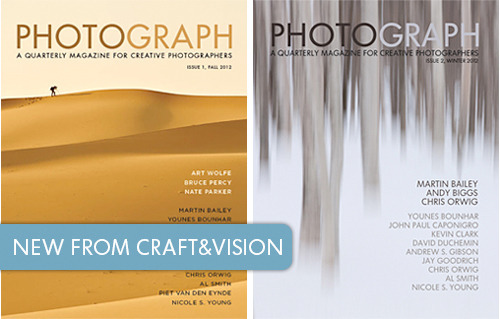
Several months ago, as I bumped across the Gobi desert, I decided to create a magazine. Blame it on the vodka.  It’s been years since I bought a magazine other than Lenswork, mostly due to the disappointment of spending anywhere from $8 to $16 on something that’s mostly ads, just to get to that one article that’s not about Top Ten Pro Tricks to Focus Your Camera! Hey, there’s nothing wrong with learning to focus. But I’ve got that one (mostly) nailed at this point. So I made a list of the things I myself wanted. I wanted, most of all, photographs. Big, beautiful, un-cropped, and unadorned with lame comments or gigantic pull-quotes. I wanted to hear from the photographers I respected. And I wanted to learn about the things that actually impact my craft and my art, like articles about creativity, composition, and printing.
It’s been years since I bought a magazine other than Lenswork, mostly due to the disappointment of spending anywhere from $8 to $16 on something that’s mostly ads, just to get to that one article that’s not about Top Ten Pro Tricks to Focus Your Camera! Hey, there’s nothing wrong with learning to focus. But I’ve got that one (mostly) nailed at this point. So I made a list of the things I myself wanted. I wanted, most of all, photographs. Big, beautiful, un-cropped, and unadorned with lame comments or gigantic pull-quotes. I wanted to hear from the photographers I respected. And I wanted to learn about the things that actually impact my craft and my art, like articles about creativity, composition, and printing.
That was in July. Today we’re launching Issue One of PHOTOGRAPH, A Digitial Quarterly Magazine for Creative Photographers. It’s 132 spreads/pages long, and it’s exactly what I hoped for in Mongolia, even if I didn’t know it at the time. The first three featured portfolios come from Art Wolfe, Nate Parker, and Bruce Percy, and are followed up with short interviews. I do a column called Without The Camera, and this issue it’s about the art of the edit. There’s a featured article from Andrew Gibson, and columns from people like John Paul Caponigro (Creative Composition), Martin Bailey (The Art of the Print), Chris Orwig (Creativity), Piet van Den Eynde (Lightroom Before + After), and Kevin Clark (The Studio Sketchbook). Download the Table of Contents.
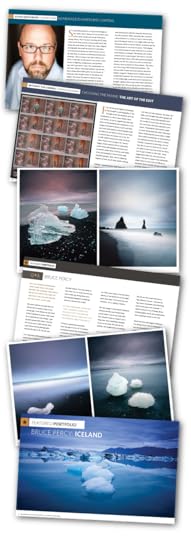 We’ve taken our time on this and made something we’re proud of. It’s ad-free and will always be ad-free. It’s quarterly, not monthly, so we can concentrate on making something truly worthwhile and beautiful. We believe in being part of the solution, not part of the problem, so we’re paying our authors and our photographers, and we’re proud of that. And because we’ve always been, and will always be, champions of the amateurs, the ones who do this for the love of it, we’re committed to profiling photographers who you already know and look up to as well as those you’ve not, and giving you a chance to submit your work too. Photography, like any creative endeavour, is about creating and sharing, and we wanted to create a platform for that.
We’ve taken our time on this and made something we’re proud of. It’s ad-free and will always be ad-free. It’s quarterly, not monthly, so we can concentrate on making something truly worthwhile and beautiful. We believe in being part of the solution, not part of the problem, so we’re paying our authors and our photographers, and we’re proud of that. And because we’ve always been, and will always be, champions of the amateurs, the ones who do this for the love of it, we’re committed to profiling photographers who you already know and look up to as well as those you’ve not, and giving you a chance to submit your work too. Photography, like any creative endeavour, is about creating and sharing, and we wanted to create a platform for that.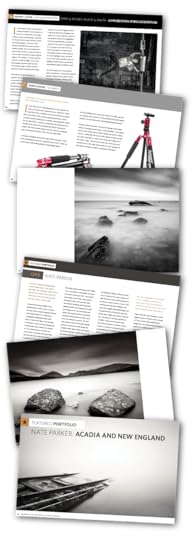 PHOTOGRAPH is available now through Craft & Vision, as a PDF download, for USD$8. Because we’ve always given discounts, we’re offering a 4-issue subscription for US$24, which means you buy 3 issues, and get one free. You can subscribe today, or, if you want to do so risk-free, we’ll send a short email to everyone that buys Issue One and give you the chance to top-up your subscription with the remaining 3 issues for US$16, as long as you do it before the end of this month, November 2012.
PHOTOGRAPH is available now through Craft & Vision, as a PDF download, for USD$8. Because we’ve always given discounts, we’re offering a 4-issue subscription for US$24, which means you buy 3 issues, and get one free. You can subscribe today, or, if you want to do so risk-free, we’ll send a short email to everyone that buys Issue One and give you the chance to top-up your subscription with the remaining 3 issues for US$16, as long as you do it before the end of this month, November 2012.
October 29, 2012
On “Missing The Shot.”
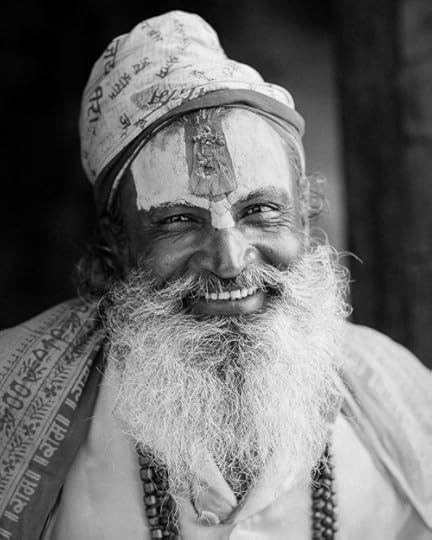
Last week I wrote about the crippling power of fear in the life and process of the artist. I think there are some fears that are universally felt among artists of every discipline, others unique to us as photographers. Chief among those fears, it seems, is the fear that we’ll “miss the shot.” And so we amass every piece of gear we feel gives us that edge. Longer lenses, stronger strobes, cameras with ISO ratings that would astonish us 5 years ago. We are pulled to this stuff like the moon pulls at the tides. So when I posted the gear I’m taking to Nepal it’s not surprising that so many people reacted with something like shock, shaking their heads and saying, “I could never go that light.”
Nonsense. Of course you could. Art is made within constraints. It always has been. If you’ve been hired to shoot an assignment you might choose to change those constraints, stacking the deck in your favour with the professional understanding that your clients pay you to shoot a specific brief, and you’d be an idiot to show up unprepared. That’s not what I’m talking about. I’m talking about that thing in my brain that screams and throws a tantrum each time I set a long lens aside in favour of travelling lighter. It yells profane things at me, reminds me the best shot of my life is out there and I’ll miss it without that lens. It guilts me, shames me, then sends me – in one last panicked ploy – to the B&H website to see if there’s a similar lens but lighter. You need it! After 10 minutes of this, never mind the days it takes me to finally zip my bag and head out the door, I’m convinced Peter Jackson modeled his Gollum after something dark inside me, as I mentally stroke my 300/2.8 and mutter, “my precious…” into the darkness. You need it!
Bullsh*t. Of course I’ll miss some shots. I’ll miss them without my 70-200 as well as without my 300/2.8. Or my Elinchrom Quadra and softbox. Or my tilt-shift lens. But I’ll miss more shots – many more – when I’m held back by the mentality that focuses not on what is there to be seen and photographed with the gear I have, whatever it is, but on the gear I do not. I will miss more shots by staying in bed, by refusing to follow my curiosity around that one more corner, or not slinging my camera over my shoulder when I walk to dinner, than I will by leaving the long heavy lens at home. I’ll miss more shots by chimping when the moment I was trying to photograph is busy unfolding itself before my distracted eyes. I’ll miss more shots by looking so damn hard that I’m unable to actually perceive. I’ll miss more shots by not slowing down, being patient, and waiting for the moment to happen. I’ll miss those moments because I’m wrestling with lens changes or a heavy backpack or the paranoia that my expensive gear is going to get damaged or stolen. I’ll miss that shot as often because of that lens as I will without it. And even when I “get the shot,” it’s worth asking, would it have been better with a wider lens? Maybe yes, and maybe no. But I was so damn sure when I was packing…
We all have a piece of gear we lean on – for many, the longer lens presents an opportunity to avoid getting close to a subject and risking rejection when we ask if we can make their photograph. Our fear clutches to that lens like a life preserver and as long as it’s in the bag we’ll use it. Leave it at home and you have to decide what you fear more – approaching a stranger or going home without the photograph. I think it’s a sign of growth as artists when we begin to embrace, even create constraints, instead of trying so hard to avoid them. It’s easy to blame a lack of gear on not “getting the shot,” and in some cases it’s true. But no one sees the photographs you missed. Only the ones you create. You can’t make them all. Neither can I. We’ll make better photographs, right here and now in this moment, when we’re not mourning the loss, or potential loss, of others.
**
I head to Nepal on Saturday. On Thursday we announce the launch of PHOTOGRAPH, a new digital quarterly magazine for creative photographers. When I head to the airport to fly to Frankfurt, then Bahrain, then Kathmandu, I’ll be taking my GuraGear Bataflae 26L camera bag. I don’t know where reader Carlos Celis is off to, but we drew his name today and Gura Gear will be sending him a Bataflae 26L, in the colour of his choice. Congrats, Carlos.
October 26, 2012
Another Look at the B&W Mix in Lightroom
It seems like I get more and more people telling me they’re frustrated with their black & white conversions. It’s a topic all it’s own and this short post won’t do it justice, but the most important aspect of a black and white image is the control over tonal contrasts. You can do this in a number of ways, but – assuming you’re using Lightroom – if you’re just cranking down the Vibrance or Saturation on your images as a first step, you’re robbing yourself of the controls in the HSL/Color/B&W panel in the Develop Module. The principle is the same in Photoshop, ACR, and probably Aperture too. Using the B&W mix allows you to assign different tonal values to the colours in the image, and therefore control them.
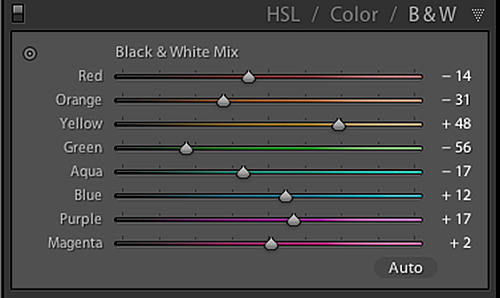 See the shot at the top of the post? Same ugly little gourd, 3 different mixes, primarily in the orange and yellow channels. I used no other tools here. If you love black and white photographs but don’t feel you have the control you want, the best thing you can do is go play with the B&W channel mixer. The B&W mix you see in the screen shot (above) is from the last version of the gourd, the oranges pulled quite dark, the yellows pulled quite light. I’d give you settings for the others, but I don’t think they’ll be as helpful to you as simply grasping the idea yourself by spending 20 minutes in Lightroom with a couple images.
See the shot at the top of the post? Same ugly little gourd, 3 different mixes, primarily in the orange and yellow channels. I used no other tools here. If you love black and white photographs but don’t feel you have the control you want, the best thing you can do is go play with the B&W channel mixer. The B&W mix you see in the screen shot (above) is from the last version of the gourd, the oranges pulled quite dark, the yellows pulled quite light. I’d give you settings for the others, but I don’t think they’ll be as helpful to you as simply grasping the idea yourself by spending 20 minutes in Lightroom with a couple images.
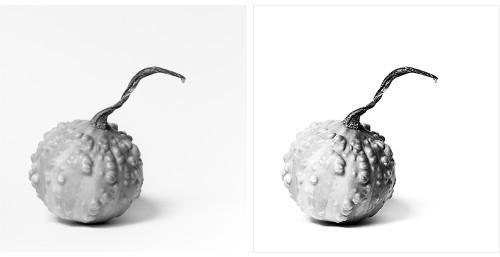
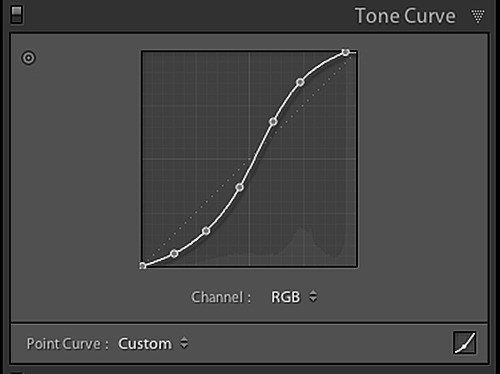 Once you’ve got a feel for that, the Tone Curve is next. The images above are the same photograph, one without Tone Curve tweaks, and the other with a strong S-curve (pull down the shadows and blacks, pull up the highlights and whites.) Tone Curve allows you to more carefully establish the relationships between tones than a simple tweak to the Contrast slider, which is a bit of a blunt instrument. Again, my intent’s not to teach you the ins and outs but to encourage you to go play with this tool. Don’t push too far, and keep an eye on the histogram, but between Tone Curve and the B&W Mixer, you’ll have the tools to begin honing your black & whites.
Once you’ve got a feel for that, the Tone Curve is next. The images above are the same photograph, one without Tone Curve tweaks, and the other with a strong S-curve (pull down the shadows and blacks, pull up the highlights and whites.) Tone Curve allows you to more carefully establish the relationships between tones than a simple tweak to the Contrast slider, which is a bit of a blunt instrument. Again, my intent’s not to teach you the ins and outs but to encourage you to go play with this tool. Don’t push too far, and keep an eye on the histogram, but between Tone Curve and the B&W Mixer, you’ll have the tools to begin honing your black & whites.
October 24, 2012
The Voice of Fear
I tell my students at the Vancouver Gatherings that fear is the greatest barrier to creativity. I tell them to bring their fears into the light, to give their fears a chance to say their piece, then to call bullshit and move on. I tell them this because the alternative is to leave our fears muttering to us from the shadows, the unknown places of our lives. They tell us we’re not good enough, or more reasonably, that we’d be better off waiting until we are ready, whatever that means. And so we occupy ourselves with the tasks our fears set for us, all of them benign enough that we rarely sit up and notice we’ve gone days, months, even years without doing our work, our art.
In the more intimate conversations about this stuff I acknowledge my own fears, only to get that confession brushed aside as often as not, as though the cumulative voices of 40 years of my own fears can be silenced by a few published books, 25,000 Twitter followers, and the fact that in the eyes of others you’ve “made it.” Our fears don’t lie down that easily.
I’m afraid. I’m afraid I’ve shot my last good photograph. I’m afraid I’ve written my last compelling sentence, that my words don’t touch as deeply or resonate as honestly as I hope. I’m afraid I’m repeating myself. I’m afraid my harshest critics are right. I’m afraid the muse, from whom I make my life and my living, will abandon me and my ideas run dry. I’m afraid my work won’t measure up to even my own standards. And I’m afraid (listen up, Alanis Morisette, because this is truly ironic,) that fear will hold me back.
So because I will never be the man that lives without fear, I give those fears a chance to be heard. I let them run, once in a while, like children on the back lawn, loud and cacophonous, until they wear themselves out. And as they do so I listen to their voices. Small. Shrill. Fueled more by imagination than truth. If not by imagination, then by memories; how many of us still hearing the voice of a kid at school who mocked us for being different, or the voice of an adult, who should have known better, telling us to grow up? Down that kind of tunnel those voices only amplify.
And so I tell my students that it’s true. That if they risk and fail, they will, most likely die. Or wind up horribly maimed. And they stare at me blankly until the absurdity of it makes them laugh.
If the studies are to be believed, more North Americans fear speaking in public than they fear death. If you ever needed an illustration of the absurd power of our fears, it’s that. But it’s not that people fear standing up. Nor opening their mouths. It’s the fear of our voice being heard. It’s the fear of rejection. Of failure. And for some, the fear that we’ll succeed and have to do it again.
Where, I wonder, is the fear that we’ll waste our lives, that we’ll go to the grave our voices unheard? Fear’s a poor motivator, but it strikes me odd that it never drives us forward with the same vigour with which it holds us back.
Our problem, I think, is not that we fear. We fear instinctively. It’s as natural to us as breathing. In some cases, it’s that fear that keeps us alive, though more often I suspect it’s what keeps us from truly living. Our problem is that we listen to that fear whispering “What if?” to us and we don’t take that question out of the shadows and hold it to the light. Fear only asks us the questions; it’s not answering that question, letting the uncertainty gain momentum in the silence, that holds us back.
What if people don’t like it?
They won’t. Not all of them. Do it anyways. Do it for you.
What if you fall down?
You will. Pick yourself up. Try again.
What if it’s hard?
It will be. It’s worth it. Do it anyways.
What if I embarrass myself?
You will. Take a bow. Laugh. Do it again. It’s only those on the bleachers, bound by their own fears, who will mock instead of cheer. Pity them. Or hope that your grace will give them the courage to get out of their seats.

